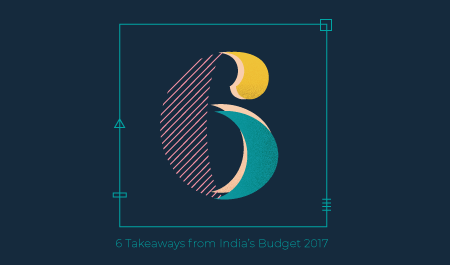6 Ways in Which India's New Budget Affects You

The announcement of India’s new budget was a much anticipated event this year. For starters, this was the first time that the Rail Budget and General Union Budget was being announced as one. Moreover, after the demonetisation wave that swept the Indian economy during the last two months of 2016 all eyes were glued to 2017’s budget announcements with the expectations that there might be some major changes on the horizon.
Here are some of the major highlights of Budget 2017 as announced by Finance Minister Arun Jaitley on Wednesday, Feb. 1.
1.Changes in personal taxation
Experts expected that India’s new budget would bring changes in the tax slab. People expected that the government would raise the tax limit. However, post demonetisation Modi’s aim has been to bring more number of people under the taxable bracket. Therefore, he reduced the tax rate for the ones on the lower spectrum of the salary. At the same time, he ensured that those in the higher tax bracket pay more in terms of income tax by levying a surcharge in addition to the percentage tax rate that they have already been paying.
According to the Union Budget 2017, if you are earning less than Rs. 5 lakh, then you have to pay only 5% of your income to the government in taxes as opposed to the previously existing 10% tax rate. Those making anywhere between Rs. 50 lakh and Rs. 1 crore, have to pay a surcharge of 10%. Prior to this announcement, those earning above Rs. 1 crore were already paying a surcharge of 15%.
2.Tax cuts for businesses
Not only did the budget provide a relief to individual taxpayers but also to big and small businesses. The companies that make a turnover of up to Rs. 50 crores was decreased to 25% from the previous 30%. According to the Modi government, companies with this kind of a turnover constitutes about 96% of the companies who file their returns, especially startups.
Budget 2017 also extended the profit-based deductions for startups up to seven years from the previously existing five years.
3. Long term capital gains
Several market analysts expected the finance minister to announce an increased tax on long term capital gains. However, that didn’t happen during Jaitley’s budget announcement which resulted in a strong rally of the market. The government’s borrowing target has reduced which is more than likely going to result in a lower interest rate on loans. If the average Indian consumer is able to get personal loans at a lower interest rate, then there is a higher chance that she/he ends up taking loans for the dream house that they always thought of building one day or even getting a new car.
4. Cash transactions of more than Rs. 3 lakhs will no longer be valid
This announcement comes mere months after demonetisation shocked many Indians. The aim to make India more “clean” has been a constant refrain uttered by the Modi government. Keeping in mind the “cleaning up” of the Indian economy, Jaitley announced that any transaction above Rs. 3 lakhs CANNOT be conducted in cash. The vendor who accepts more than Rs. 3 lakhs in cash cannot show those transactions as legal when claiming her/his personal tax returns. Transactions of more than Rs. 3 lakhs can be conducted through cheques or digitally—cue Modi’s initiative to “digitise” India. Another reason is of course reducing the circulation of black money in the market.
5. Rs. 2,000 per donor limit on cash donations to political parties
Jaitley announced that according to India’s new budget of 2017, each donor interested in helping out political parties can only donate Rs. 2,000 in cash. Initially, the limit was Rs. 20,000 for unknown persons donating to political parties. This is a measure taken in order to reduce corruption and excessive undeclared cash circulated during an election campaign. This is a part of bringing about “transparency in the electoral process,” which means that with this initiative, the government hopes to make the very process integral to any democracy more smooth, less corrupt and fair to all.
6. Increased expenditure on infrastructure
When it comes to improving the infrastructure, governments usually factor in the rate of inflation every budget syqr647. Estimates show that India would require about $1 trillion to create additional airports, roads and ports and to renovate and update existing infrastructure. The 2017 Union Budget which is India’s new budget for the year, allots about 4 trillion rupees for infrastructure expenditure which is about 10 percent more than the 3.58 trillion rupees that was actually spent in 2016 financial year.